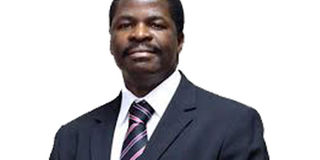How we can achieve African free trade area with quality content

Dr Mangeni is the Director – Trade & Customs COMESA Secretariat
What you need to know:
- The CFTA promises enormous benefits and welfare gains by doubling intra-Africa trade, but this will all depend on how good the deal finally agreed is and how soon it kicks in.
- There is an increasing body of literature suggesting that services will provide new pathways for Africa towards social economic transformation.
- It will be important to keep the number of negotiation partners to a minimum where possible, through negotiating as groups; and to set a fairly short time frame for completing the negotiations so they don’t go on endlessly.
As Africa launches its massive Continental Free Trade Area (CFTA) on March 21, 2018 in Kigali at an extra-ordinary Summit of the African Union to be hosted by President Paul Kagame, the most important priority for the last minute preparatory meetings must be to ensure good content and quality. This is to avoid launching an empty or redundant CFTA.
The CFTA promises enormous benefits and welfare gains by doubling intra-Africa trade, but this will all depend on how good the deal finally agreed is and how soon it kicks in. Africa is the last stronghold of poverty on earth, with some of the worst human development indicators. As one of the 12 flagship programmes under the AU’s Agenda 2063, the CFTA is a key test of the determination of Africa to work resolutely towards achieving an integrated, peaceful and prosperous Africa by 2063. Africa must therefore get it right.
The CFTA will include trade in services, which is of huge strategic importance for Africa. Services already contribute on average to more than 50 per cent of the GDPs of African countries. Services constitute key enablers for development, such as communication, transport, banking, insurance, energy, education, and health. Services are high growth areas, such as tourism and construction.
In many cases, it is all that young professionals have for earning a living, namely, their skills. The idea of entrepreneurial universities, where course work and dissertations should result in commercialisable ideas and business propositions, rather than just paper degrees at graduation, will need vibrant services markets.
There is an increasing body of literature suggesting that services will provide new pathways for Africa towards social economic transformation. In their recent book The Unexplored Potential of Trade in Services in Africa, Grover and Dihel graphically and empirically demonstrate how trade in services is providing the much needed employment and incomes to ordinary people, and contributing towards social economic transformation.
What will be required soon, however, is to go beyond the framework of rules and disciplines that have been agreed in the Protocol, and identify the services sectors in which to create an African integrated services market and in which to attract investment. This would be followed by sector regulatory frameworks and trade and investment terms and conditions, and creating awareness about these trade and investment opportunities.
Some clear considerations can assist the identification of the initial group of services sectors, to target infrastructure services - services that are already liberalised autonomously or in the regional economic communities; services already opened up at the WTO; and high growth sectors for job creation. On these criteria, the following few services could be initially prioritised: Communication, tourism, banking, transport, and energy. Education, health and construction services are just as important and can be put in a second phase to follow soon.
The good news is the Single African Air Transport Market was launched and a protocol on movement of persons concluded only last month, which provide an early harvest in services.
In the area of trade in goods, the main approach to market opening or tariff liberalisation will be the linear cut. This is a straightforward approach, in being easy to stage and monitor implementation of. What is required now is to agree on a periodic percentage cut, preferably a transparent common approach. Before this is agreed, there will be no tariff reduction schedule.
However, bilateral tariff negotiations will be a supplementary modality. Bilateral negotiations could be complex in terms of multiple partners to negotiate with and uncertain haggling over specific tariff lines. It will be important to keep the number of negotiation partners to a minimum where possible, through negotiating as groups; and to set a fairly short time frame for completing the negotiations so they don’t go on endlessly.
The other thing to be addressed is the figures for sensitive and excluded products. Both these categories will cover 10 per cent of total product lines - that is about 600 products. But how many of these can be designated as excluded or sensitive, is the question to be discussed and answered now.




